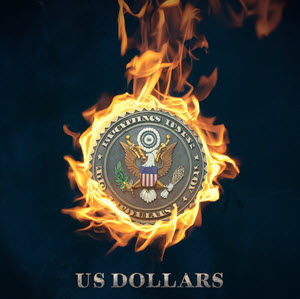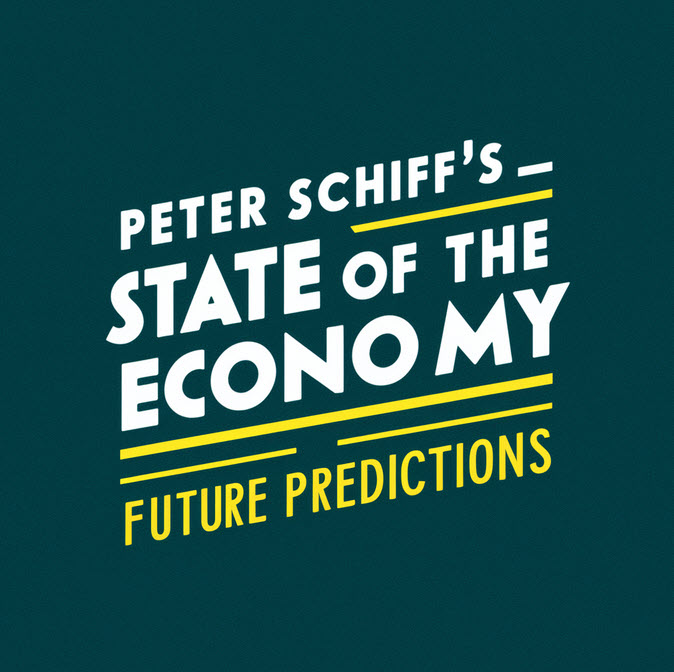Peter Schiff August 2024 Unpacking the State of the Economy and Future Predictions
As we dive further into 2024, financial analyst and sound money advocate Peter Schiff continues to share his insights based on Austrian economics principles. This blog post will summarize Schiff’s latest discussions on the state of the economy, his predictions for a financial crisis, and his critique of current monetary policies.
Understanding the Economic Predictions for 2024: Peter Schiff’s Perspective
Peter Schiff, a staunch advocate of Austrian economics, has long criticized the monetary policies of central banks, especially the Federal Reserve. His predictions often focus on the repercussions of deficit spending, the dangers of fiat currency, and the merits of returning to a gold standard. In 2024, Schiff’s economic forecasts continue to stress these themes amidst rising global economic trends.
- Quantitative Easing (QE) Programs: Central banks, including the Federal Reserve, have utilized QE programs extensively since the 2008 financial crisis and, more recently, during the COVID-19 pandemic to inject money into the economy. Schiff argues that these policies, which essentially create money from thin air, devalue the fiat currency, leading to long-term economic instability and inflation.
- Negative Interest Rates: Implemented by countries like Japan and certain European nations, negative interest rates aim to encourage spending and investing to boost economic activity. Schiff criticizes these policies for distorting economic decision-making and potentially leading to a ‘zombie economy’ where unviable businesses are kept afloat, preventing healthier economic adjustments.
- The 2008 Financial Crisis: Schiff gained significant attention for his prediction of the 2008 financial crisis, where he foresaw the bursting of the housing bubble fueled by low interest rates and risky mortgage lending practices. This crisis exemplifies the dangers of excessive credit growth facilitated by loose monetary policy.
- Rising National Debts: Countries around the world, including the United States, have seen their national debts skyrocket, especially in response to the economic fallout from the coronavirus pandemic. Schiff points to these increasing deficits as unsustainable, ultimately leading to financial disaster without significant policy changes.
- Inflationary Trends Post-COVID-19: As economies recovered from the pandemic, many, including the U.S., experienced rising inflation rates. Schiff argues that such inflation is a direct consequence of excessive money printing by central banks and poor fiscal policies, validating his concerns about fiat currency.
- Gold Price Movements: Historically, during times of economic uncertainty, the price of gold, which Schiff advocates for as a standard, often increases as investors seek safer assets. The trend of rising gold prices amid geopolitical tensions, inflation concerns, and uncertainty about monetary policies exemplifies Schiff’s argument for gold as a more stable store of value compared to fiat currencies.
The Inevitable Dollar Collapse: Why Peter Schiff Believes the End is Near

One of Schiff’s most persistent warnings revolves around the dollar collapse, which he attributes to unsustainable monetary policies and excessive debt. According to Schiff, the reliance on fiat currency and abandonment of the gold standard have positioned the dollar on a precarious edge. His arguments highlight how fiat currency criticism plays a crucial role in understanding potential economic collapse scenarios.
- Unsustainable Monetary Policies: Schiff argues that the Federal Reserve’s and other central banks’ monetary policies, particularly the printing of money and artificially low interest rates, create bubbles in various sectors like real estate and stocks. These policies distort the true cost of borrowing, encouraging excessive spending and investment mistakes.
- Excessive National Debt: Schiff points to the rapidly increasing national debt as a critical threat to the dollar’s stability. He believes that the government’s reliance on debt-financed spending will eventually lead to a crisis of confidence among international investors and creditors, resulting in a sharp decline in the dollar’s value.
- Abandonment of the Gold Standard: By decoupling the dollar from a tangible asset like gold, Schiff argues that the U.S. has given the Federal Reserve unchecked power to inflate the currency. This abandonment leads to a lack of intrinsic value in the currency, making it vulnerable to devaluation.
- Overreliance on Fiat Currency: Schiff contends that fiat currencies are inherently unstable because their value is based solely on government decree and trust in the issuing authorities. Without a physical commodity backing them, fiat currencies are susceptible to mismanagement and can lead to hyperinflation, as seen in historical examples like Zimbabwe and Venezuela.
- Global De-Dollarization: Schiff observes a trend where other countries are starting to reduce their reliance on the dollar in international trade and reserves. This shift could diminish demand for the dollar, further undermining its value.
- Inflation Concerns: Persistent low interest rates and quantitative easing have increased the money supply, which Schiff argues will inevitably lead to significant inflation or even hyperinflation, eroding the dollar’s purchasing power domestically and its appeal as a reserve currency globally.
- Loss of Credibility and Confidence: Schiff believes that the ongoing monetary policy missteps, coupled with unsustainable fiscal policies, will eventually lead to a loss of global confidence in the U.S. dollar. Once trust is undermined, there could be a rapid and uncontrollable decline in the dollar’s value.
- Schiff uses these points to support his belief that a return to the gold standard and more responsible fiscal and monetary policies are critical to stabilizing the economy and preserving the value of the currency.
Federal Reserve Criticism: Mistakes and Missteps in Monetary Policy
Schiff’s critiques of the Federal Reserve are central to his economic narrative. He argues that the Fed’s mishandling of interest rates and inflation concerns has paved the way for significant economic instability. By detailing specific Federal Reserve mistakes, Schiff underscores the impact of poor monetary policy on economic cycles and forecasts a looming financial crisis that could mirror past recessions.
Prolonged Low Interest Rates:
- Example: The Federal Reserve has maintained historically low interest rates for an extended period, especially following the 2008 financial crisis and during the COVID-19 pandemic. These low rates were intended to stimulate economic growth by making borrowing cheaper.
- Criticism: Schiff argues that these artificially low rates discourage savings, encourage excessive borrowing and risk-taking, and lead to the creation of asset bubbles in real estate, stock markets, and other sectors. He believes that instead of creating sustainable economic growth, these policies have led to speculative booms that inevitably result in painful busts.
Quantitative Easing (QE) Programs: - Example: Starting in 2008, the Federal Reserve embarked on several rounds of quantitative easing, a form of monetary policy where the central bank purchases longer-term securities from the open market to increase the money supply and encourage lending and investment.
- Criticism: Schiff views QE as a massive expansion of the Fed’s balance sheet that effectively prints more money, leading to currency devaluation and inflation. He contends that this practice has not only failed to ensure long-term economic stability but has also created dependencies that are difficult to unwind without causing further economic disruptions.
- Response to the COVID-19 Pandemic:
- Example: In response to the economic shock caused by the COVID-19 pandemic, the Federal Reserve slashed interest rates to near zero and implemented additional QE measures.
- Criticism: While these actions were meant to mitigate the economic impact of the pandemic, Schiff criticizes them as an overreach that has set the stage for even higher levels of debt and more intense economic fallout. He argues that such policies, while providing short-term relief, prevent necessary economic corrections and lead to greater long-term instability.
The Role of Precious Metals and Alternative Investments

In response to his predictions of economic turmoil, Schiff continues to advocate for precious metals investing as a hedge against inflation. His commitment to gold as a cornerstone of sound money principles offers an alternative investment route that contrasts sharply with the mainstream financial systems reliant on fiat currencies.
Conclusion: Reflecting on Schiff’s Economic Bubble Theory and Market Crash Predictions
As we reflect on Peter Schiff’s 2024 economic insights, it becomes clear that his warnings are not just speculative; they are based on a deep understanding of economic history and cycles. Whether discussing potential recession indicators, currency devaluation, or stock market analysis, Schiff’s approach offers a critical examination of global economic policies and practices. For those interested in safeguarding their financial future, considering Schiff’s perspective on economic forecasting and libertarian economics might provide a valuable blueprint.
Engage in the Debate: Economic Policy Discussions
Peter Schiff’s economic analyses provoke important discussions about the future of our global economy. Readers are encouraged to delve deeper into libertarian economics and Austrian economics principles to better understand the alternative viewpoints on financial health and policy-making.
What are your thoughts On Alternative Investments?
Recent posts:
Crypto & Economy News and Highlights
